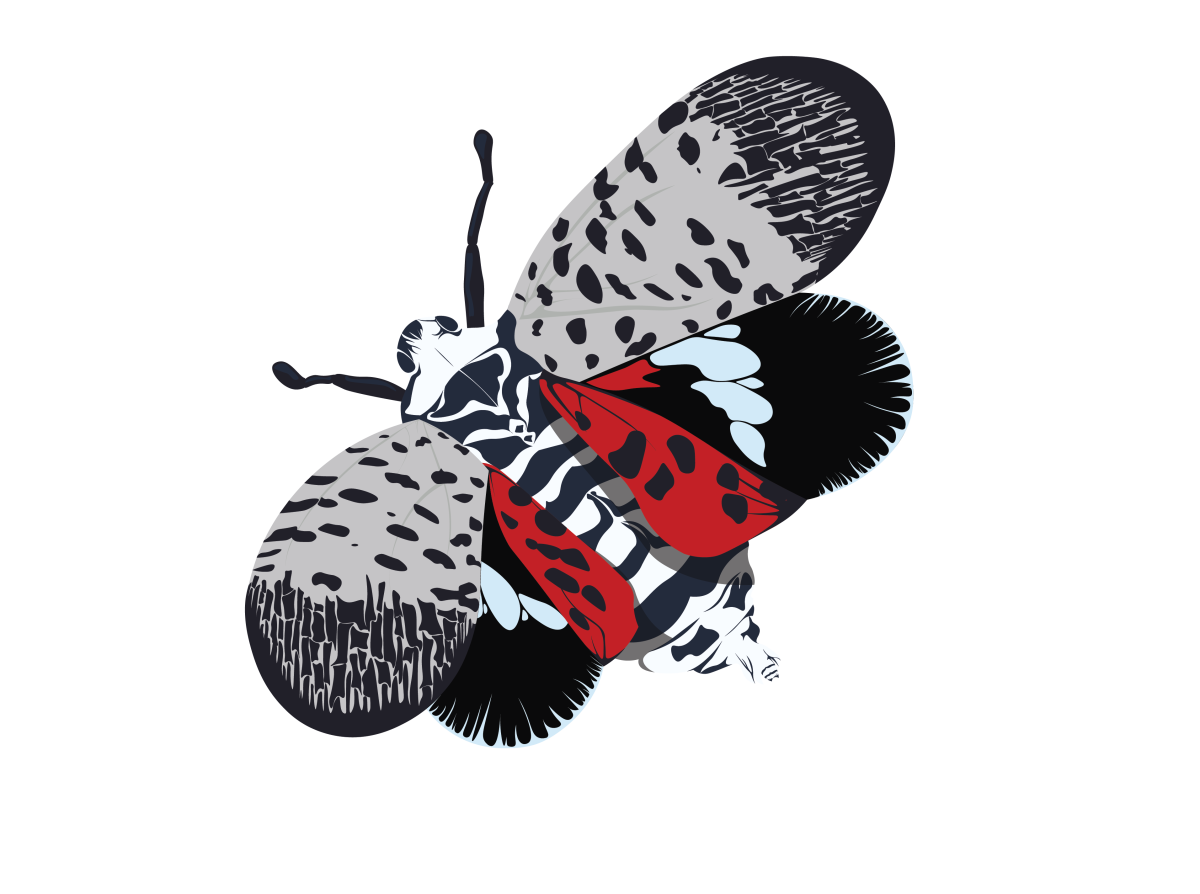On June 29, the North Carolina Department of Agriculture said the first spotted lanternfly in North Carolina was discovered in Forsyth County.
According to Penn State University, spotted lanternflies are an invasive species known for their easily recognizable bright red and white coloration with scattered black dots. They produce honeydew, a sugary secretion that attracts stinging insects like wasps and causes sooty mold to grow on infested plants, homes and businesses.
Dr. Clyde Sorensen, an entomology professor at NC State, said the spotted lanternfly could have a significant impact on the environment in North Carolina.
“It potentially could be disastrous for grape and fruit producers,” Sorenson said. “But it’s also going to be a major pain for people who live in the area. The lanternfly will feed on at least 70 different plants, including maples, and lots of people have maples in their yards as shade trees.”
The lanternfly was spotted in the Yadkin valley, which is home to over 400 of North Carolina’s wineries. According to Sorenson, if not controlled, the lanternflies will be detrimental to North Carolina’s wine industry, feasting on grapevines and prohibiting them from photosynthesizing.
Aside from the agricultural issues lanternflies create, they are prolific egg layers. According to Sorenson, they are known to lay eggs everywhere from wheel wells to outdoor working equipment, making them exceptionally good at spreading their populations.
“If you live in the area where this thing gets established you’re going to have to be very scrupulous about when you travel out of that area that you’re not transporting eggs,” Sorenson said. “If folks don’t take that seriously then it’s going to be everywhere very quickly. The adult insects don’t fly particularly well; they don’t go particularly far. They lay their eggs on everything. If they lay eggs on your car tire or your camper trailer and then you go somewhere and they hatch, you’ve potentially established a new population.”
Matt Bertone, director of the NC State Plant Disease and Insect Clinic, said controlling the lanternfly population is difficult.
“There really is no containing the pest at this point,” Bertone said. “Even if the local population is eradicated, which is unlikely, we would still be at risk of other spotted lanternflies entering the state. This will become even more of a risk as the insect spreads in other states. It is my opinion that North Carolina will likely have this pest established across the state within the next decade or so.”
A study by economists at Penn State’s College of Agricultural Sciences estimated that the lanternfly, if not contained, would contribute to 2,800 jobs lost and a loss of $324 million in 2019, largely due to agriculture and forestry damage. Since the lanternfly was first spotted in Pennsylvania in 2014, the state has “quarantined” 45 counties for the insect, limiting the movement of landscaping material and tree parts around the state to avoid spreading infestation.
According to Penn State University, a popular control measure is reducing the population of Ailanthus altissima, commonly known as the “Tree of Heaven,” which is the most common host for lanternflies. The tree is found in Forsyth county, but is highly populated in Durham and Raleigh.
The North Carolina Department of Agriculture and Consumer Services created a spotted lanternfly reporting tool and urged individuals to report the insect if they suspect a spotting.













